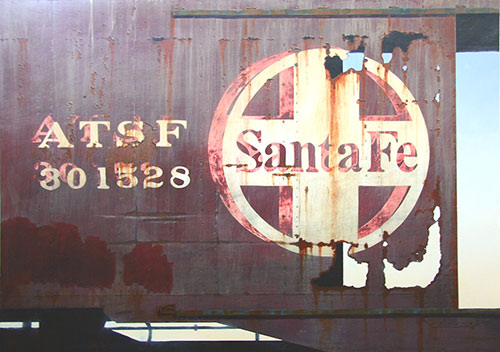EVOKE Contemporary in Santa Fe, New Mexico, is proud to play host for “The Half-Life of Dreams” — a tantalizing solo exhibition that will leave you guessing “Photograph or not?”
Using a special handmade tool and a masterful eye for detail, painter Francis di Fronzo has built a reputation for his incredible landscape paintings. The artist’s technique revolves around his “comb brush” — a tool of his own design made up of 60-80 individual hairs attached to a wooden stick. “Using this comb, he creates images of open fields and rolling hills by tapping the hairs onto a toned panel,” the gallery reports. “After many layers, the result is an infinite expanse of individual blades of grass, rich in tone, detail and hue.”

Francis di Fronzo, “At Sunset, Part 3,” oil over watercolor and gouache on panel, 34 x 50 in. (c) EVOKE Contemporary 2016
“The Half-Life of Dreams” — which opened on June 24 — presents a new type of landscape from di Fronzo. Rather than beautiful vistas of unpopulated nature, the artist appears to focus more on ruins of small-town America. Whether they depict rusted train cars, abandoned lifeguard towers, or a lonely street lamp, the paintings evoke a nostalgia for the past — a bygone era in America that once was.
“The Half-Life of Dreams” will be on view through July 23. To learn more, visit EVOKE Contemporary.
This article was featured in Fine Art Today, a weekly e-newsletter from Fine Art Connoisseur magazine. To start receiving Fine Art Today for free, click here.








